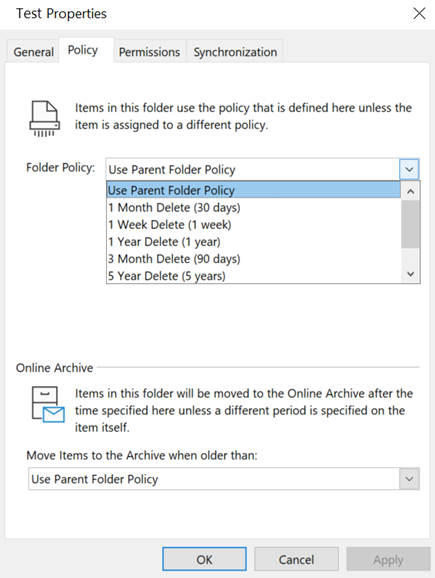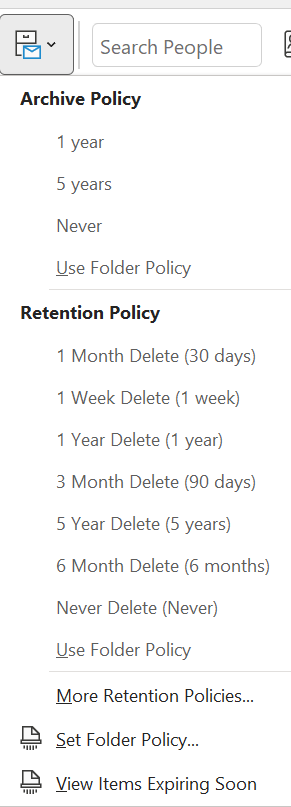
Retention policies are part of messaging records management (MRM) technology available with Microsoft Exchange Server and Microsoft 365 email accounts. MRM makes it easier to keep messages that are needed to comply with organization policy, government regulations, or legal needs, and to remove content that no longer has legal or business value.
Note: There are Microsoft Outlook and Exchange Server license requirements for this feature. For more information, see License requirements for Personal Archive and retention policies.
Organizations can create default retention policies for all mail items in an Exchange Server or Microsoft 365 mailbox, specific policies for default folders — such as Inbox, Drafts, Sent Items, Deleted Items, and Junk E-mail — or create retention policies that users can apply to folders or individual items. All or a combination of these options can be configured by your Exchange Server or Microsoft 365 administrator.
Important: If you have any questions about your organization’s retention policies, you should review your organization’s guidelines or contact your legal department.
It is easier to assign a retention policy on a per-folder basis instead of individually to each message. However, even when a retention policy is assigned to a folder, you can select one or multiple messages, and then assign a different policy to only those messages. A policy assigned to a message takes precedence over any inherited folder policy.
Important: Any retention policy that includes a date by which the email message will be deleted will appear in the email message header. However, if the retention policy applied is retain-only and doesn't require the email message to be deleted, the policy name and description may not appear in the email message header or in the header of the Reading Pane.


The Assign Policy command is missing on the ribbon.
If the Assign Policy command is missing on the ribbon, it might be in the overflow menu. Click the three dots at the very right side of the Ribbon and you should see Assign Policy. It's also possible your Exchange Server administrator or your Microsoft 365 administrator hasn't enabled retention and archive policies for your account or you aren't using an Outlook license that includes this feature. For more information, see License requirements for Personal Archive and retention policies.
When you remove a retention policy from an email message, the folder policy applies to the item, if one is assigned.
The retention policy for a message appears in the header in the Reading Pane under the recipient names and includes the expiration date.